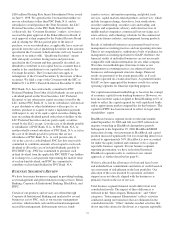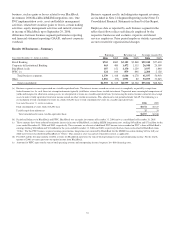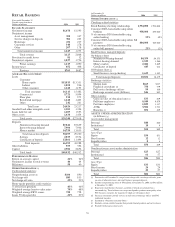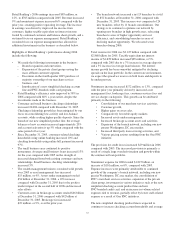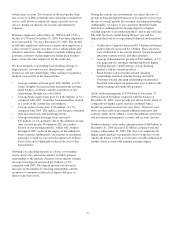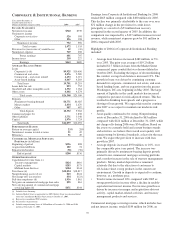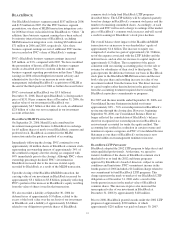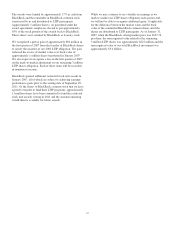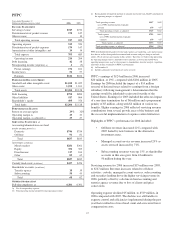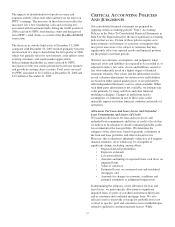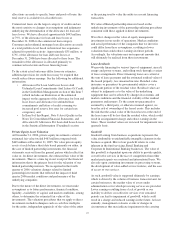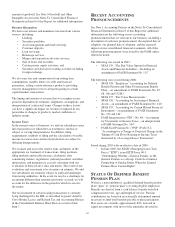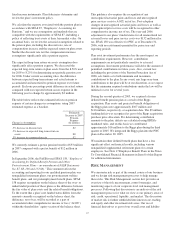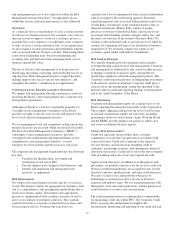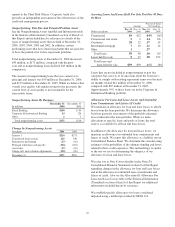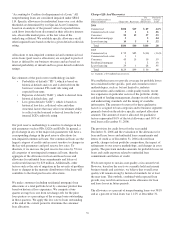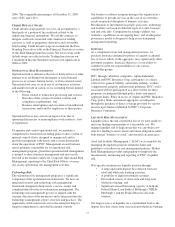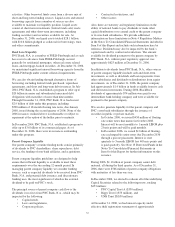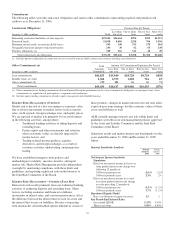PNC Bank 2006 Annual Report Download - page 54
Download and view the complete annual report
Please find page 54 of the 2006 PNC Bank annual report below. You can navigate through the pages in the report by either clicking on the pages listed below, or by using the keyword search tool below to find specific information within the annual report.The impacts of distribution/out-of-pocket revenue and
expenses entirely offset each other and have no net effect on
PFPC’s earnings. The increases in these line items reflect the
increased 12b-1 fees (marketing, sales and servicing fees
associated with investment funds) during the fourth quarter of
2006 received by PFPC from fund accounts and then passed
on to PFPC’s fund clients as a result of the BlackRock/MLIM
transaction.
The decrease in custody fund assets at December 31, 2006
compared with December 31, 2005 resulted primarily from the
deconversion of a major client during the first quarter of 2006,
which was partially offset by new business, asset inflows from
existing customers, and equity market appreciation.
Subaccounting shareholder accounts serviced by PFPC
increased over the year-earlier period due to net new business
and growth in existing client accounts. Total assets serviced
by PFPC amounted to $2.2 trillion at December 31, 2006 and
$1.9 trillion at December 31, 2005.
C
RITICAL
A
CCOUNTING
P
OLICIES
A
ND
J
UDGMENTS
Our consolidated financial statements are prepared by
applying certain accounting policies. Note 1 Accounting
Policies in the Notes To Consolidated Financial Statements in
Item 8 of this Report describes the most significant accounting
policies that we use. Certain of these policies require us to
make estimates and strategic or economic assumptions that
may prove inaccurate or be subject to variations that may
significantly affect our reported results and financial position
for the period or in future periods.
We must use estimates, assumptions, and judgments when
financial assets and liabilities are required to be recorded at, or
adjusted to reflect, fair value. Assets and liabilities carried at
fair value inherently result in a higher degree of financial
statement volatility. Fair values and the information used to
record valuation adjustments for certain assets and liabilities
are based on either quoted market prices or are provided by
other independent third-party sources, when available. When
such third-party information is not available, we estimate fair
value primarily by using cash flow and other financial
modeling techniques. Changes in underlying factors,
assumptions, or estimates in any of these areas could
materially impact our future financial condition and results of
operations.
Allowances For Loan And Lease Losses And Unfunded
Loan Commitments And Letters Of Credit
We maintain allowances for loan and lease losses and
unfunded loan commitments and letters of credit at levels that
we believe to be adequate to absorb estimated probable credit
losses inherent in the loan portfolio. We determine the
adequacy of the allowances based on periodic evaluations of
the loan and lease portfolios and other relevant factors.
However, this evaluation is inherently subjective as it requires
material estimates, all of which may be susceptible to
significant change, including, among others:
• Expected default probabilities,
• Exposure at default,
• Loss given default,
• Amounts and timing of expected future cash flows on
impaired loans,
• Value of collateral,
• Estimated losses on consumer loans and residential
mortgages, and
• Amounts for changes in economic conditions and
potential estimation or judgmental imprecision.
In determining the adequacy of the allowance for loan and
lease losses, we make specific allocations to significant
impaired loans, to pools of watchlist and nonwatchlist loans
and to consumer and residential mortgage loans. We also
allocate reserves to provide coverage for probable losses not
covered in specific, pool and consumer reserve methodologies
related to qualitative and measurement factors. While
44


